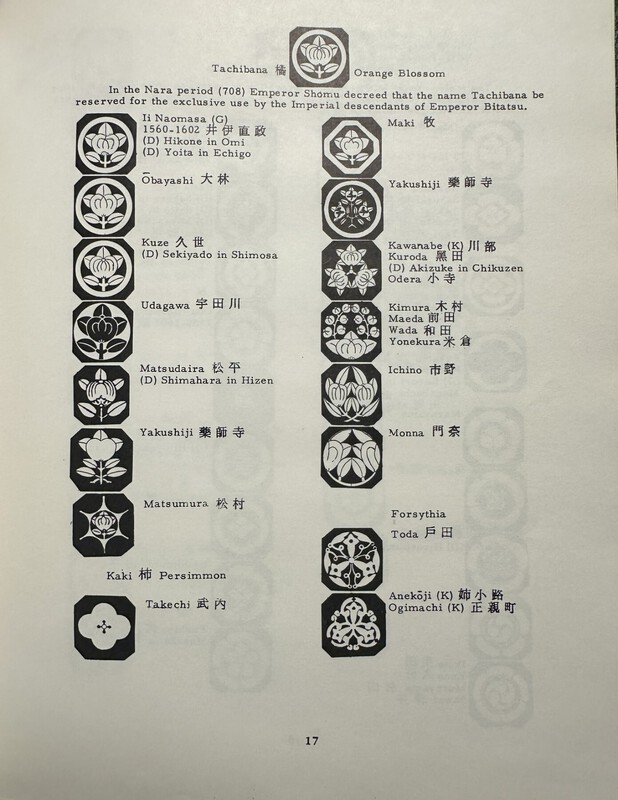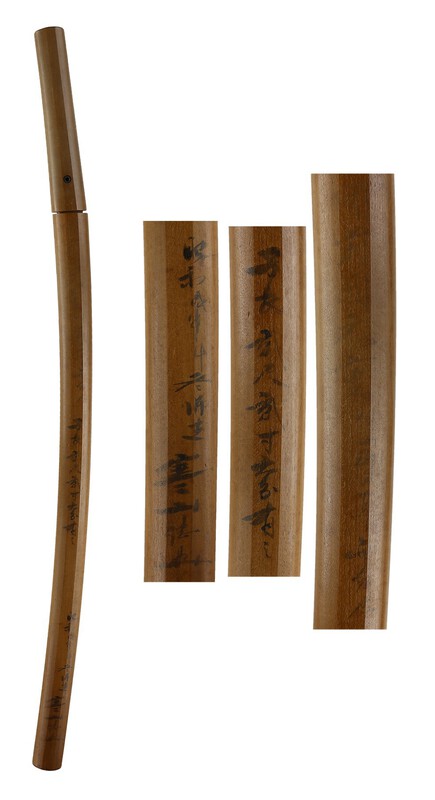Bizen Osafune Motoshige Naginata Naoshi Katana in Shirasaya 22nd NBTHK Juyo Token
Koto: Jyo Jyo Saku: Saijo O-Wazamono: Bizen
1. Basic Information
Type: Naginata Naoshi Katana
Period: Late Kamakura period (Kenmu era, 1334)
Blade Length: 68.6 cm (27.01 inches)
Certification: 22nd NBTHK Juyo Token
2. Description and Features
Signature: Unsigned (Mumei), attributed to Den Motoshige by NBTHK, Dr. Kanzan Sato and Tanobe Sensei attribute directly to Motoshige.
Habaki: Gold-foiled double Habaki featuring the Tachibana family crest, associated with the Ii clan, notably Ii Naomasa, a renowned general under Tokugawa Ieyasu. You can read more for example here: https://en.wikipedia.org/wiki/Ii_clan
Curvature: 2.2 cm (0.87 inches)
Weight: 735 grams
Motohaba (Width at Base): 2.95 cm (1.16 inches)
Thickness: 0.74 cm (0.29 inches)
Peg Holes: 1
3. Blade Characteristics
Polish: The blade has been professionally re-polished to enhance its overall appearance and historical value.
Shape: Originally a large Naginata from the Nanbokucho period, reshaped into a Uchigatana.
Jigane (Steel Texture): High-quality Itame Hada mixed with Mokume Hada, featuring Chikei. The Jigane is clear. There are visible Utsuri on the blade.
Hamon (Temper Line): Suguha base with Choji Midare pattern, including square Gunome and small Gunome. Features Uchinoke, Ashi, Yo, small Nie, Kinsuji, and Sunagashi.
Historical Features: Signs of wear from polishing and use in battle, indicative of its age and authenticity as a warrior’s weapon. The spine of the blade shows minor "kirikomi" (battle scars), marks from clashes with other swords, further emphasizing its honorable history as a weapon of war.
4. Historical Context
This sword is a vivid testament to the turbulent and rich history of its time, offering a glimpse into the craftsmanship and traditions of the Bizen Osafune school. The lineage and quality of this blade reflect the high regard in which it was held by its owners throughout the centuries.
Provenance: The sword bears sayagaki inscriptions on both its old and new shirasaya:
Old Shirasaya: Sayagaki by Dr. Kanzan Sato (1968), reading: "Bizen Koku Motoshige Mumei. The blade length is 2 Shaku 2 Sun 3 Bu, written by Dr. Kanzan in winter 1968." This Sayagaki was written prior to the issuance of the NBTHK Juyo Token certificate.
New Shirasaya: Sayagaki by Tanobe Sensei (2024), reading: "The 22nd NBTHK Juyo Token: Bizen Kuni Motoshige. This is an unsigned work that was originally a large Naginata during the Nanbokucho period and has been reshaped into a Uchigatana. The steel has an Itame Hada that stands out, mixed with Mokume Hada and Ji-Hada creating a flow with a faint and disturbed reflection. Based on a Choji Midare pattern, the Hamon includes square Gunome and small Gunome, with the presence of Uchinoke, Ashi, Yo, small Nie, and Sunagashi, indicating a mix of Aoe characteristics within the Bizen tradition, showcasing the distinct quality of the same craftsman. Blade Length: 68.6 cm (27.01 in). Dated: Kinoe-Tatsu (Year of the Dragon), Kisaragi (February). Tanzan Signature (Kaō)."
5. Mountings (Koshirae)
This sword is currently housed in a new shirasaya and includes the old shirasaya for preservation and historical significance.
6. Sale Conditions
Price: €29.000
Shipping: International shipping available; Shipping and export costs are added to the sword price, shipping in EU is free of charge. It is possible to come and to check and pick up the sword in Prague, Czech Republic, EU.
Payment: Bank to Bank (free of charge), Revolut Bank Transfer (free of charge, buyer’s protection) or PayPal - PayPal fees are added to the sword price.
You may find original quality images on this link: https://drive.google...RRv3ZJy6?usp=sharing
This sword is a rare and exceptional work by Osafune Motoshige, recognized as Saijo O-Wazamono and rated Jyo-Jyo Saku by Fujishiro. Its elegant sugata and exceptionally beautiful jihada highlight the mastery of its maker, while the hamon is rich with hataraki, showcasing intricate craftsmanship and artistic brilliance. As a whole, this blade stands as a historically significant example of Motoshige's work, with a fascinating connection to the Ii Naomasa clan and its ties to Tokugawa Ieyasu. Although there is no direct documentary evidence, it is safe to say that this sword was cherished as a family heirloom by members of the clan. For collectors and enthusiasts, this is a unique opportunity to acquire a piece of history that represents the finest qualities of Koto craftsmanship. The presence of two shirasaya, each bearing sayagaki by renowned experts Dr. Kanzan Sato and Tanobe Sensei, further enhances its historical and artistic value, making it an extraordinary sword.










.thumb.jpg.7c68c1627be24c8e8cc9801dfcde54db.jpg)

















